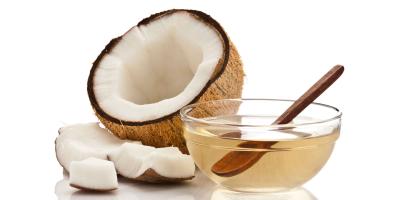
Almost every dog gets excited when it's mealtime, and that doesn't matter whether it's a wet or dry food. But when you're in the dog food aisle and looking at all the options, how do you pick? The truth is that both wet and dry dog food offer your pet plenty of benefits and well-rounded nutrition, but there may be a reason to pick one over the other for your dog. Read on to find out the differences between wet and dry dog food and the points to consider when making your choice.
What Is the Difference Between Wet and Dry Dog Food?
The main difference between wet and dry dog food is exactly as the names suggest: the moisture content and texture. However, every dog food has a slightly different list of ingredients, and you may find that the different varieties of wet and dry food use different proteins or have a different mix of carbohydrates. Wet dog food comes in a can instead of a bag like dry food and often has a stronger smell.
Should I Feed My Dog Wet Food?
If you want to use wet dog food, you most likely can! However, it's always a good idea to discuss any changes to your dog's diet with your veterinarian beforehand. Your vet can address any potential concerns you have, such as trying to help your dog lose weight or handle a potential food allergy. There are also some specific benefits of wet dog food discussed in the next section that may make it the better choice for your dog.
Wet vs. Dry Dog Food: How to Choose
When it comes to the wet vs. dry dog food debate, there are several things to keep in mind. These include:
- Age. One of the benefits of wet dog food is that it has a stronger smell. This may not seem like a plus for you, but it can entice older dogs, who may be losing their senses of taste and smell, to eat more and stay healthy. Wet food is also easier for older dogs who may have tooth or gum issues to chew and swallow. The consistency and texture are such that they can often just lick it up and swallow it as is.
- Nutritional needs. Wet food, as its name would suggest, has a higher water content than regular kibble, which can help if your dog tends to be underhydrated from not drinking enough water. It can also help dogs who tend to eat fast slow down and feel like there is more to eat.
- Preference. Whether it's the smell, taste or texture, some dogs just plain prefer wet food to dry. If your dog doesn't seem interested in dry kibble and you're struggling to keep him at a healthy weight, switching to a wet food — or even mixing a little wet food on top of the dry — can help encourage them to eat more.
Tips for Using Wet Food
If you do decide to go with a wet food, there are some key things that can make the transition easy. The main thing to keep in mind is that wet food can't be left out like dry food if your dog doesn't eat it all, which can lead to waste. Some wet dog food comes in single-serving sizes, but if you're buying larger cans, make sure to cover any unused food for that feeding and keep it in the fridge. You may also need to experiment a bit to find a food that works for your dog. There are many flavours available, but if you're trying a few, make sure to follow the guidelines for transitioning food to avoid upsetting your dog's stomach.
Benefits of Dry Dog Food
While wet food has its benefits, that doesn't mean that dry dog food doesn't have its advantages too. One thing that's very convenient about dry dog food is that it can be left out. If your dog doesn't eat it all, you can just put it back in a sealed container (to keep out pests) and wait for the next feeding.
Dry dog food doesn't come in individual portion sizes (although there are a range of bag sizes), which can also be a plus. Not having it preportioned out means you can adjust the amount of food to your dog's individual needs. Large bags are also often more cost-effective and have you making fewer trips to the store.
Dry dog food also carries the added benefit of being able to be used as a treat. When you're training your dog, you can take part of their main meal and parcel it out throughout the day, using kibble to reinforce obedience training.
Whether you want to go with wet or dry dog food, Purina Canada has you covered. Purina One comes in a variety of flavours to suit your dog's needs and preferences, and Purina Beyond is a grain-free offering for dogs who may be more sensitive or for owners who want to avoid additives.
If you're looking for more information on how to feed your dog and ensure he has a well-rounded, nutritionally balanced diet, check out our articles on dog feeding. We also have lots of tips and tricks when it comes to bringing your new puppy home, obedience training and taking care of your favourite pup.
Related articles



